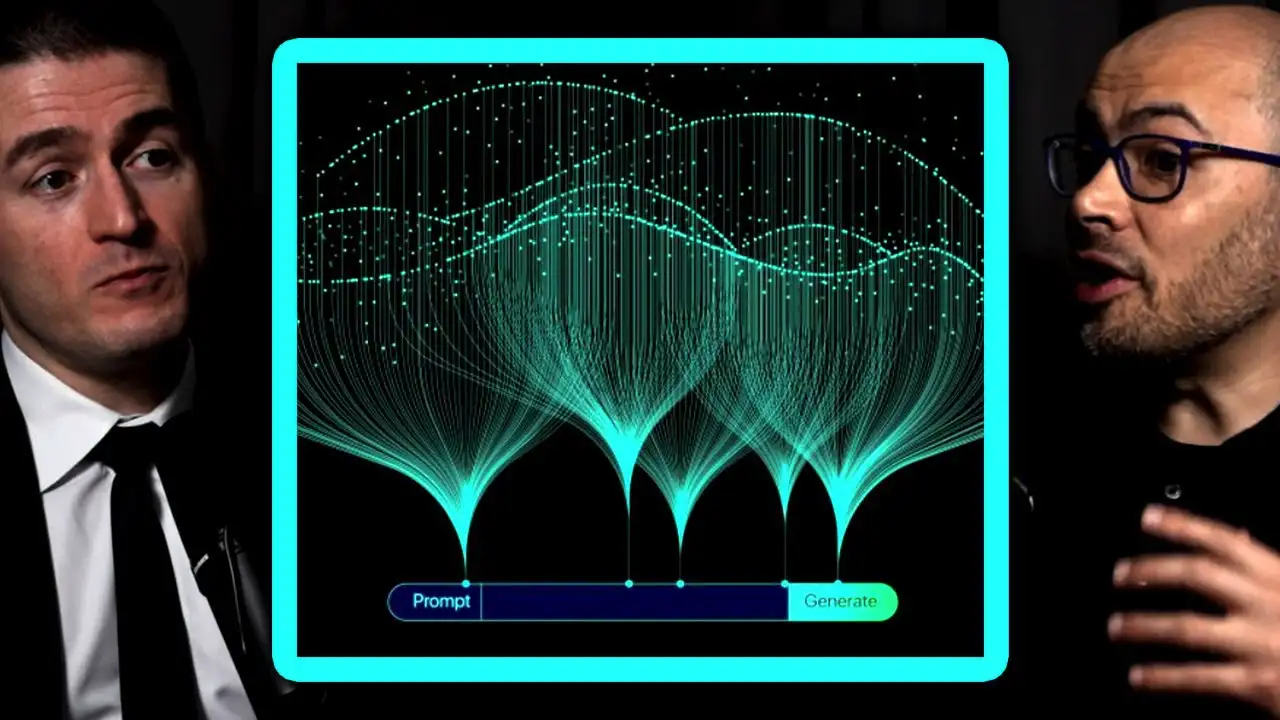The Universe Is Code: Demis Hassabis on AI, Games, and the Future

Vivi Carter · 31, July 2025
“Everything is information. Reality is inherently learnable. AGI isn’t just a milestone—it’s a magnifying glass for the universe.”—Demis Hassabis, Lex Fridman Podcast (Source)
Introduction: A Visionary Conversation
In a recent, nearly three-hour conversation with Lex Fridman, DeepMind co-founder Demis Hassabis laid out a compelling, interconnected vision of the future—one where artificial intelligence, physics, consciousness, and video games converge within a single, learnable reality. Far from tech evangelism or speculation, his arguments are rooted in cutting-edge research and personal conviction, reimagining what progress in AI actually means.

Information as the Bedrock of Reality
Beyond Energy and Matter
Hassabis makes a provocative claim: Information is more fundamental than either energy or matter. This is not a new idea in theoretical physics—the work of John Archibald Wheeler, who coined “It from Bit” (Quanta Magazine), comes to mind—but Hassabis integrates it with his deep experience in AI. Under this framework, the universe itself becomes a vast information-processing system running on physical “hardware.”
The Learnable Universe
Patterns in protein folding, the shape of a mountain, or the dance of planets across the cosmos—these are not random, but the result of an evolutionary sieve with one dominant law: what is stable survives. Hassabis argues there must exist learnable manifolds—deep, underlying structures—that AI can uncover and exploit. Essentially, the world isn’t just complex; it’s understandable, and therefore modelable.
P vs NP: Not Just Math, but Physics
Perhaps the boldest idea here is reframing the famous “P vs NP” problem, typically considered a theoretical computer science puzzle, as a question about the structure of reality itself. If nature’s patterns are indeed learnable, then seemingly intractable problems (protein folding, for example) might yield to AI-driven inference, allowing for rapid, polynomial-time solutions that were impossible just years ago.
How AI Learns Physics: Veo, AlphaFold, and Beyond
Case Study: AI Models as Reality Simulators
Hassabis sees models like Veo (for video simulation) and AlphaFold (for protein structure) as proof-of-concept: deep learning systems capable of reverse-engineering the physical world. By distilling immense data—say, billions of video frames—into actionable predictions, these models find the “rules” beneath the noise. It’s not just mimicry; it’s discovering the software that reality runs on. For more on AlphaFold’s breakthrough, see the original Nature paper.
AGI’s True Purpose: Science’s Ultimate Telescope
Not Just Smarter Machines
For Hassabis, building AGI (artificial general intelligence) isn’t an end unto itself. Instead, the real ambition is to use AGI as a tool—one that could accelerate humanity’s understanding of fundamental questions, from the birth of life to the structure of consciousness.
The Einstein Test
How do you know you’ve built an AGI? Forget the old Turing Test or rote exam questions. Hassabis’s benchmark: Drop the system into 1900, give it the physics knowledge of that era, and see whether it independently “invents” relativity—or, perhaps, creates a game so deep and elegant it's on par with Go. Real AGI will surprise us with creativity, not just rote competence.
The Timeline: 2030 and the 50% Bet
While timelines in AI are famously slippery, Hassabis wagers there’s a 50/50 chance AGI will arrive by 2030—a provocative, if not controversial, prediction.
Application Blueprints
Virtual Life Simulation:
Hassabis’s 25-year dream—modeling all the chemical and biological dynamics inside a single cell, then scaling up to simulate the origins of life itself.
Radical Abundance:
AGI could accelerate solutions for fusion energy, superconductors, and new materials, allowing physical resources to become effectively limitless (see Abundance: The Future is Better Than You Think).
Cosmic Ambitions:
If energy becomes cheap and plentiful, mankind could become a space-faring species, making real Carl Sagan’s fantasy that “consciousness awakens the universe.”
Video Games: Laboratories for Human and Machine Thought
Not Just Play—Preparation
Hassabis’s gaming credentials run deep (think “Theme Park” and “Black & White”), shaping his worldview. He sees games as safe, bounded universes—testbeds for decision-making, collaboration, and strategy. Whether chess, Go, or football, every game is a microcosm, a compressed reality.
The Dream: Generative, Playable Universes
Imagine a game not with fixed content, but an AI-powered world—dynamic, continuously generated, your choices fundamentally reshaping the narrative. This “playable Veo” is the Holy Grail: a shared storytelling universe alive to every player’s intent.
Gaming the Mind
More than an aside, Hassabis credits gaming (and chess) with giving him the cognitive skills to tackle complex scientific questions: breaking down problems, modeling scenarios, iterating solutions.

On Consciousness: Classical Brains, Alien Experiences
Simulating the Mind
Hassabis pushes back against quantum brain theories like Roger Penrose’s, arguing the mind {is likely} a classical process, reproducible on traditional computers—though qualia (subjective experience) remain profound mysteries.
Carbon vs. Silicon: Divergent Subjectivities
Even if an AI perfectly mimics human behavior, its subjective world—rooted in silicon, not carbon—could be fundamentally different. He raises a tantalizing future: might brain-computer interfaces someday let us feel what “thinking” is like for an AI, bridging the most alien divide?
Conclusion: Reality’s Ultimate Question
For Demis Hassabis, the convergence of AI, physics, games, life, and consciousness all loops back to one big, unsolved puzzle: What is reality?
AGI is simply the best tool we have for chipping away at that question—a means not just of pushing technology forward, but of transforming how humanity situates itself in the grand scheme of the universe.
Further Reading
- Does Information Define the Universe? (Quanta Magazine)
Relevant Resources
